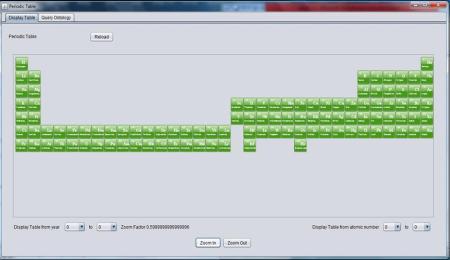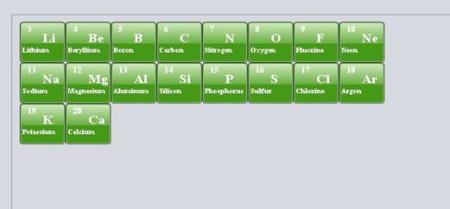At the start of July 2013 I did a Pubmed search for “ontology” or “ontologies” and recorded the numbers of papers per year. I did the same thing again, this time searching for “Gene Ontology”. A bar chart of the numbers is below (a table of the numbers is at the end of the blog).

Up until the 1990s, things just rumble along, very much at a very low-level, with only the occaisional mention of “ontology” or “ontologies”. Things pick up in the 1990s, as the CS notion of ontology was introduced as a way of organising heterogenous data, and then begin to explode in the 2000s with the advent of the Gene Ontology. The numbers for the “Gene Ontology” start in 2000 and pick up fast and fairly consistently track the total number of ontology papers and, in recent years, forming a high proportion of a large number of papers. There appears to be an anomaly or out-lier in 2010; a weirdness, mistake or a community holiday. I’ve done no further analysis of these numbers…
Purely out of interest, I had a look at the earliest paper to mention “ontology”:
Bryce P.H. ONTOLOGY IN RELATION TO PREVENTIVE MEDICINE. Am J Public Health (N Y). 1912 Jan;2(1):32-3. (PMID: 18008609)
http://www.ncbi.nlm.nih.gov/pubmed/?term=18008609
The article is very much of its time and contains some outrageous comments on the causes and spread of disease. However, the core of the paper is about using ontology as a tool for discussion; the opening sentence is
“We have to thank the metaphysicians for, if not explaining many things, at least giving us useful terms under which discussions may be carried on. least giving us useful terms under which discussions may be carried on. Ontology
is defined ‘as that branch of metaphysics which investigates and explains the nature of all things or existences.’ While he who coined the word cannot be accused of excessive modesty, yet one may thank him for it since it does give a direction to thought,…”
which sort of sums it up – especially the bit about excessive modesty.
“For the student of preventive medicine there must arise the question: In ONTOLOGY IN RELATION TO PREVENTIVE MEDICINE what ethical category must he place the agents of disease as mosquitos, the hosts
of many diseases or the specific microbes and protozoa, their most direct causes? What is the meaning of pestis, cholera, tuberculosis or syphilis in the plan of life?”
Which are questions the modern ontology community are tackling and with the greatest of modesty. Hopefully we can do this without Price’s appeal to the merits of various forms of civilisation, religion and, for that time, the acceptable notion of eugenics… Price says “… until man with the splendid intelligence with which he is endowed shall have learned the life conditions under which each of these evils attacking him exists, and how each in turn may either be subdued to his uses or removed from his pathway.” – he obviously isn’t prone to the lack of modesty he ascribes to metaphysicians.
|
Ontology OR Ontologies |
Gene Ontology |
||
|
Year |
Papers |
Year |
Papers |
|
2013 |
813 |
2013 |
587 |
|
2012 |
1257 |
2012 |
835 |
|
2011 |
1036 |
2011 |
664 |
|
2010 |
899 |
2010 |
61 |
|
2009 |
815 |
2009 |
528 |
|
2008 |
731 |
2008 |
464 |
|
2007 |
698 |
2007 |
436 |
|
2006 |
535 |
2006 |
344 |
|
2005 |
457 |
2005 |
273 |
|
2004 |
301 |
2004 |
162 |
|
2003 |
177 |
2003 |
85 |
|
2002 |
91 |
2002 |
34 |
|
2001 |
5 |
2001 |
4 |
|
2000 |
43 |
2000 |
2 |
|
1999 |
21 |
Total |
4479 |
|
1998 |
33 |
||
|
1997 |
15 |
||
|
1996 |
7 |
||
|
1995 |
21 |
||
|
1994 |
11 |
||
|
1993 |
6 |
||
|
1992 |
6 |
||
|
1991 |
7 |
||
|
1990 |
6 |
||
|
1989 |
1 |
||
|
1988 |
3 |
||
|
1987 |
3 |
||
|
1985 |
1 |
||
|
1984 |
1 |
||
|
1983 |
1 |
||
|
1982 |
3 |
||
|
1981 |
2 |
||
|
1980 |
1 |
||
|
1979 |
1 |
||
|
1977 |
1 |
||
|
1974 |
2 |
||
|
1972 |
2 |
||
|
1971 |
2 |
||
|
1968 |
2 |
||
|
1967 |
1 |
||
|
1965 |
1 |
||
|
1961 |
1 |
||
|
1951 |
1 |
||
|
1912 |
1 |
||
|
Total |
8022 |
||








